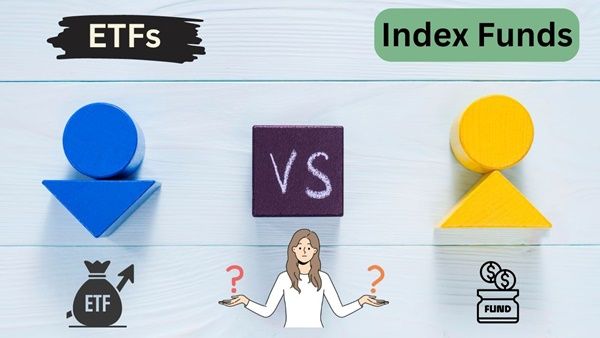Unlock the secrets to building a robust retirement portfolio with index funds and ETFs in your 401(k). Discover how these powerful investment vehicles can supercharge your savings and pave the way to financial freedom. Get ready to embark on a journey towards a secure and prosperous future. Connect with investment specialists through Bitplex 360 to better navigate your 401(k) investment in index funds and ETFs. Register now and learn investing from top rated educational firms.
Identifying Your Retirement Objectives
Identifying your retirement objectives is akin to setting sail on a journey towards a destination of financial security and fulfillment. It’s the compass that guides every investment decision you make within your 401(k) plan, shaping the trajectory of your future. To embark on this journey with clarity and purpose, you must first envision what retirement means to you.
Take a moment to visualize the lifestyle you aspire to lead during your golden years. Are you dreaming of leisurely days spent traveling the globe, pursuing lifelong passions, or simply relishing the comforts of home? Consider factors such as the age at which you envision retiring, the level of financial security you desire, and any specific milestones or aspirations you hope to achieve along the way.
By articulating your retirement objectives, you gain a clearer understanding of the destination you’re striving for, allowing you to chart a course that aligns with your aspirations.
Whether your goal is to build a substantial nest egg to fund your adventures, generate a reliable stream of retirement income, or preserve your wealth for future generations, identifying your retirement objectives provides the foundation upon which your investment strategy is built.
Understanding Your Risk Appetite
Understanding your risk appetite is akin to knowing the terrain before embarking on a journey – it empowers you to navigate the twists and turns of the investment landscape with confidence and resilience.
Your risk appetite reflects both your willingness and ability to tolerate fluctuations in the value of your investments. It’s influenced by a myriad of factors, including your investment time horizon, financial capacity to weather market downturns, and psychological comfort level with uncertainty and volatility.
To gauge your risk appetite effectively, consider your investment goals and objectives, as well as your personal attitudes towards risk. Are you comfortable with the potential for higher returns accompanied by increased volatility, or do you prefer a more conservative approach with steadier, albeit potentially lower, returns?
By understanding your risk appetite, you can tailor your investment strategy to strike the optimal balance between risk and reward, ensuring it aligns with your unique financial circumstances and aspirations.
Whether you’re a daring investor eager to seize opportunities in the market or a cautious investor prioritizing capital preservation, acknowledging your risk appetite allows you to construct a portfolio that reflects your individual preferences and goals.
Analyzing Historical Returns and Volatility
Analyzing historical returns and volatility is akin to studying the weather patterns before embarking on a voyage – it provides invaluable insights into how investment options have performed in various market conditions and the potential challenges they may face along the way.
Historical performance data offers a window into the past, allowing you to assess how a particular investment has weathered storms and capitalized on fair winds over time. Look for funds with a track record of consistent performance relative to their benchmark indexes, indicating their ability to navigate market fluctuations effectively.
Additionally, consider the fund’s volatility – the degree of fluctuation in its returns – as it provides insight into the level of risk inherent in the investment. While higher volatility may offer the potential for greater returns, it also entails increased uncertainty and downside risk.
By scrutinizing historical returns and volatility, you can make more informed decisions about which investment options are best suited to your risk tolerance and long-term objectives, ensuring a smoother voyage towards your financial goals.
Comparing Expense Ratios to Minimize Costs
Comparing expense ratios is akin to scrutinizing the fine print on a map – it’s a meticulous process that can make a world of difference in the success of your journey. An expense ratio represents the annual fees charged by a fund as a percentage of its assets under management.
While seemingly small, these fees can compound over time, significantly impacting your investment returns. When evaluating investment options within your 401(k) plan, pay close attention to their expense ratios and consider selecting funds with lower fees to minimize costs. Even seemingly minor differences in expense ratios can add up over the years, potentially eroding a significant portion of your returns.
By prioritizing funds with competitive expense ratios, you can maximize the growth potential of your investments and keep more of your hard-earned money working for you in the long run.
Remember, every percentage point saved in fees translates into greater wealth accumulation and a more secure financial future for retirement. So, take the time to compare expense ratios carefully – your journey towards financial independence will thank you for it.
Conclusion
Harness the potential of index funds and ETFs to transform your 401(k) into a wealth-building powerhouse. With strategic investment choices, you can navigate the path to retirement with confidence and clarity. Embrace the opportunities ahead and embark on a journey towards a fulfilling and financially secure future.
| Disclaimer: Opinions expressed here are those of the writers and do not reflect those of Peacefmonline.com. Peacefmonline.com accepts no responsibility legal or otherwise for their accuracy of content. Please report any inappropriate content to us, and we will evaluate it as a matter of priority. |
Featured Video


















